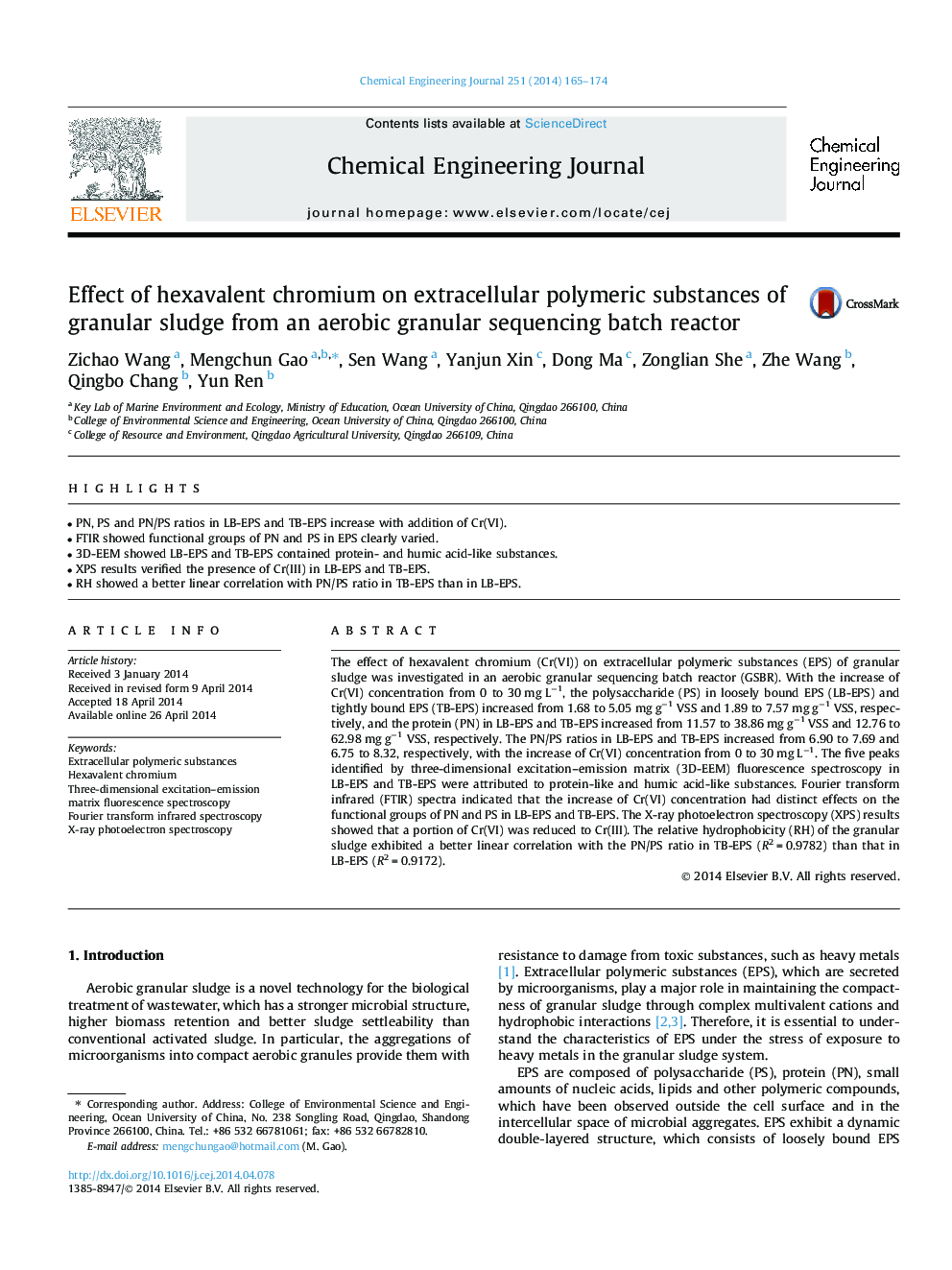| Article ID | Journal | Published Year | Pages | File Type |
|---|---|---|---|---|
| 6586387 | Chemical Engineering Journal | 2014 | 10 Pages |
Abstract
The effect of hexavalent chromium (Cr(VI)) on extracellular polymeric substances (EPS) of granular sludge was investigated in an aerobic granular sequencing batch reactor (GSBR). With the increase of Cr(VI) concentration from 0 to 30 mg Lâ1, the polysaccharide (PS) in loosely bound EPS (LB-EPS) and tightly bound EPS (TB-EPS) increased from 1.68 to 5.05 mg gâ1 VSS and 1.89 to 7.57 mg gâ1 VSS, respectively, and the protein (PN) in LB-EPS and TB-EPS increased from 11.57 to 38.86 mg gâ1 VSS and 12.76 to 62.98 mg gâ1 VSS, respectively. The PN/PS ratios in LB-EPS and TB-EPS increased from 6.90 to 7.69 and 6.75 to 8.32, respectively, with the increase of Cr(VI) concentration from 0 to 30 mg Lâ1. The five peaks identified by three-dimensional excitation-emission matrix (3D-EEM) fluorescence spectroscopy in LB-EPS and TB-EPS were attributed to protein-like and humic acid-like substances. Fourier transform infrared (FTIR) spectra indicated that the increase of Cr(VI) concentration had distinct effects on the functional groups of PN and PS in LB-EPS and TB-EPS. The X-ray photoelectron spectroscopy (XPS) results showed that a portion of Cr(VI) was reduced to Cr(III). The relative hydrophobicity (RH) of the granular sludge exhibited a better linear correlation with the PN/PS ratio in TB-EPS (R2 = 0.9782) than that in LB-EPS (R2 = 0.9172).
Keywords
Related Topics
Physical Sciences and Engineering
Chemical Engineering
Chemical Engineering (General)
Authors
Zichao Wang, Mengchun Gao, Sen Wang, Yanjun Xin, Dong Ma, Zonglian She, Zhe Wang, Qingbo Chang, Yun Ren,
